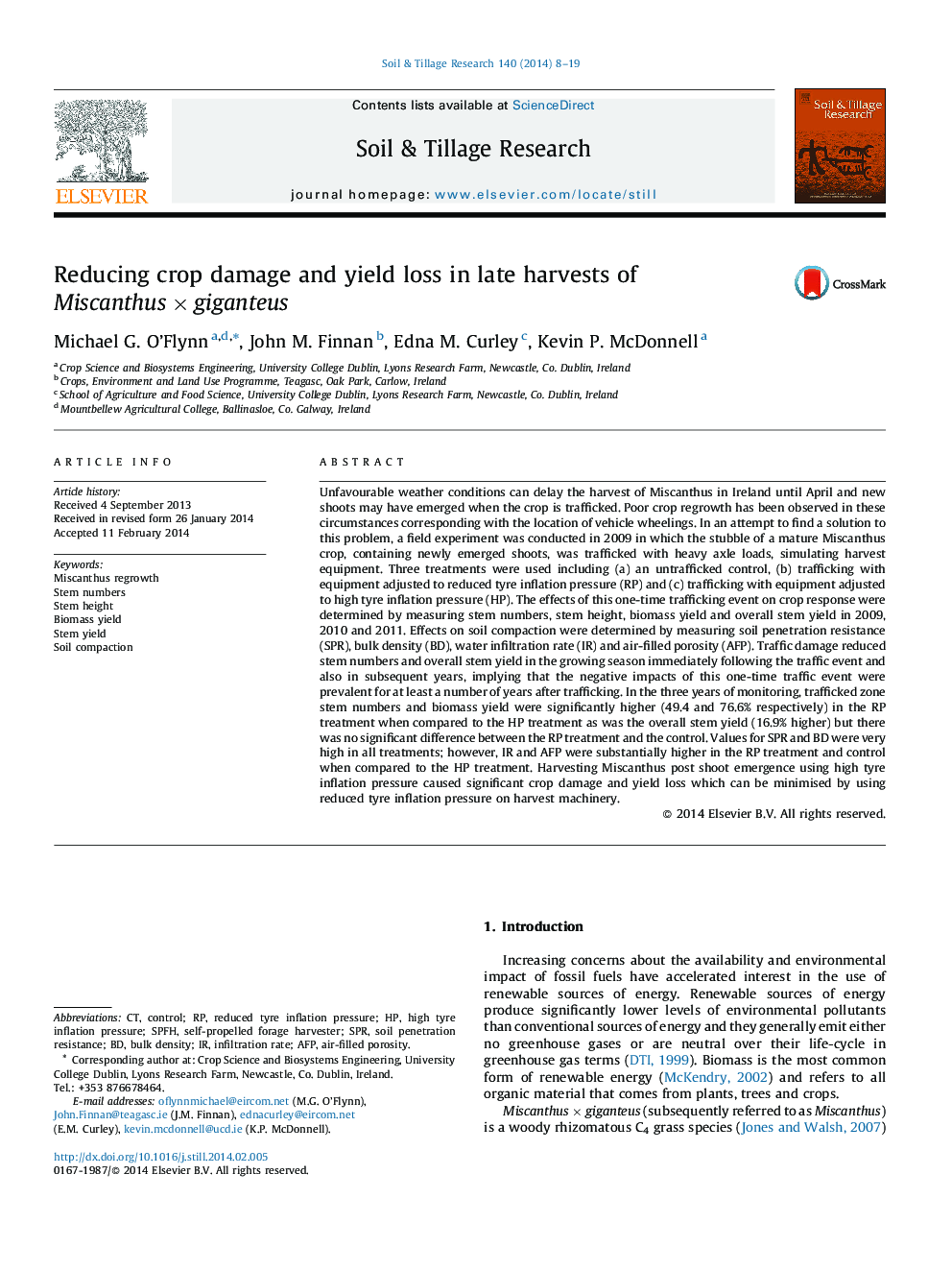| Article ID | Journal | Published Year | Pages | File Type |
|---|---|---|---|---|
| 305740 | Soil and Tillage Research | 2014 | 12 Pages |
•We used two tyre inflation pressures when harvesting Miscanthus post shoot emergence.•We examined effects on crop response and soil compaction following harvest traffic.•High tyre inflation pressures reduced yields and increased soil compaction.•Reduced tyre inflation pressures had minimum effects on yield and soil compaction.
Unfavourable weather conditions can delay the harvest of Miscanthus in Ireland until April and new shoots may have emerged when the crop is trafficked. Poor crop regrowth has been observed in these circumstances corresponding with the location of vehicle wheelings. In an attempt to find a solution to this problem, a field experiment was conducted in 2009 in which the stubble of a mature Miscanthus crop, containing newly emerged shoots, was trafficked with heavy axle loads, simulating harvest equipment. Three treatments were used including (a) an untrafficked control, (b) trafficking with equipment adjusted to reduced tyre inflation pressure (RP) and (c) trafficking with equipment adjusted to high tyre inflation pressure (HP). The effects of this one-time trafficking event on crop response were determined by measuring stem numbers, stem height, biomass yield and overall stem yield in 2009, 2010 and 2011. Effects on soil compaction were determined by measuring soil penetration resistance (SPR), bulk density (BD), water infiltration rate (IR) and air-filled porosity (AFP). Traffic damage reduced stem numbers and overall stem yield in the growing season immediately following the traffic event and also in subsequent years, implying that the negative impacts of this one-time traffic event were prevalent for at least a number of years after trafficking. In the three years of monitoring, trafficked zone stem numbers and biomass yield were significantly higher (49.4 and 76.6% respectively) in the RP treatment when compared to the HP treatment as was the overall stem yield (16.9% higher) but there was no significant difference between the RP treatment and the control. Values for SPR and BD were very high in all treatments; however, IR and AFP were substantially higher in the RP treatment and control when compared to the HP treatment. Harvesting Miscanthus post shoot emergence using high tyre inflation pressure caused significant crop damage and yield loss which can be minimised by using reduced tyre inflation pressure on harvest machinery.
